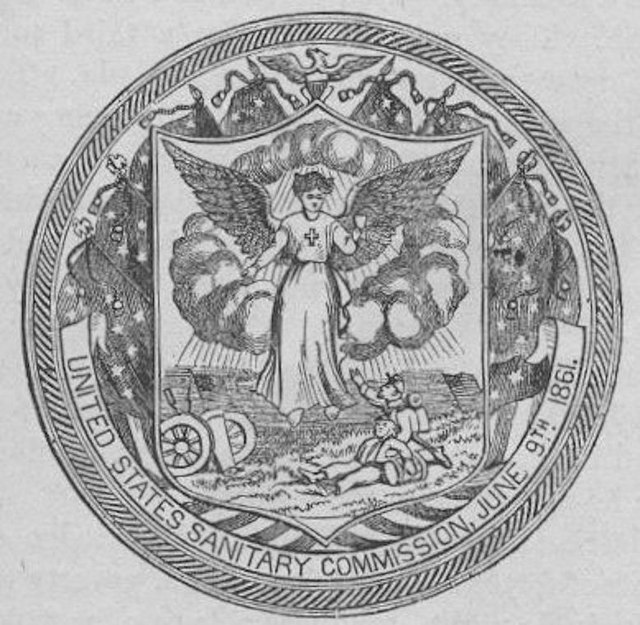United States Sanitary Commission
The United States Sanitary Commission (USSC) was a private relief agency created by federal legislation on June 18, 1861, to support sick and wounded soldiers of the United States Army during the American Civil War. It operated across the North, raised an estimated $25 million in Civil War era revenue and in-kind contributions to support the cause, and enlisted thousands of volunteers. The president was Henry Whitney Bellows, and Frederick Law Olmsted acted as executive secretary. It was modeled on the British Sanitary Commission, set up during the Crimean War (1853–1856), and from the British parliamentary report published after the Indian Rebellion of 1857.
Official seal of the Commission
Leaders of the Sanitary Commission. From left to right: Dr. William Van Buren, George T. Strong, Commission President Henry Whitney Bellows, Dr. Cornelius R. Agnew, and Dr. Oliver Wolcott Gibbs.
United States Sanitary Commission: Our Heroines (Thomas Nast, Harper's Weekly April 9, 1864)
Commission flag
Henry Whitney Bellows was an American clergyman, and the planner and president of the United States Sanitary Commission, the leading soldiers' aid society, during the American Civil War.
Under his leadership, the USSC became the largest and most effective organization dedicated to supporting the health and efficiency of the Union army.
Henry Whitney Bellows
Picture from the Brady-Handy Collection misidentified in one source as the "New York Police" Commissioners. In fact it is of the United States Sanitary Commission. From left to right: Dr. William Van Buren, George T. Strong, Commission President Henry Whitney Bellows, Dr. Cornelius R. Agnew, and Dr. Oliver Wolcott Gibbs.





